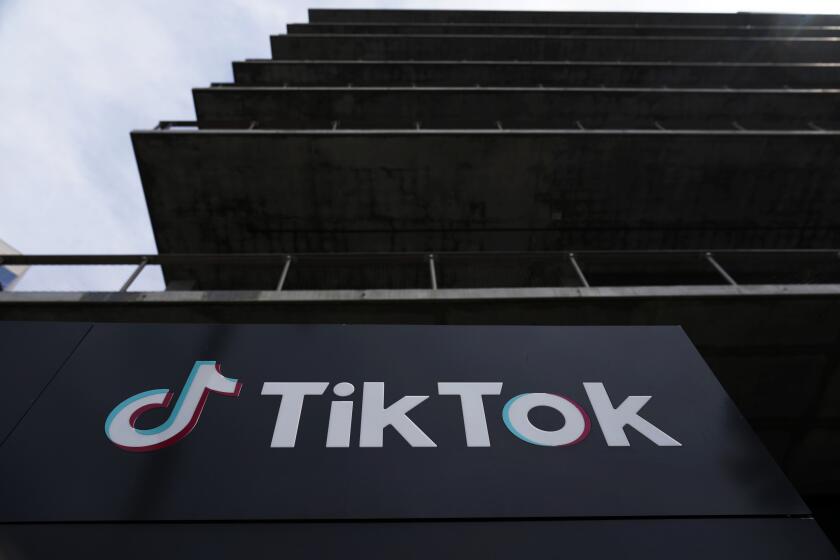Energy storage is taking on a greater role in the power grid. But how big can it get?
- Share via
In a fast-developing industry teeming with technologies that promise to be the next big thing, energy storage appears to be the biggest.
Its supporters not only sing its praises but also tout what they say is its inevitability.
“We’re going to have 10 times as much energy storage on the grid by the end of this decade and that is going to impact every facet of the energy industry,” said Matt Roberts, executive director of the Energy Storage Assn., an industry trade group.
But the electrical grid is a harsh taskmaster.
As far back as the 1880s, Thomas Edison wrestled with a way to effectively take surplus energy, save it and then use it at a later date.
It’s not enough to just store energy — system operators have to find a way to balance supply and demand instantaneously, generating every kilowatt that is demanded by customers who expect their lighting/heating/air conditioning to come on the moment they flip a switch.
“There’s a whole bunch of different, new storage technologies, but we get ones that seem to be cheaper but they fail on the density problem” of storing a large amount of energy in a small space, said Stephen Brick, senior fellow on climate and energy for the Chicago Council on Global Affairs. “We get ones that seem to improve on the energy density and they fail on the cost side.”
Energy storage technology takes on a lot of forms.
The most prominent is pumped hydro, in which water is pumped uphill behind dams and then released, with the ensuing rush of water generating power.
Pumped hydro is the biggest source of energy storage in the U.S., accounting for 96% of the industry’s total storage capacity.
But chemical storage — as in batteries — may be the source people are most familiar with, especially given the media attention that inevitably accompanies any announcement by billionaire entrepreneur Elon Musk.
Last year, Musk unveiled the Powerwall, a rechargeable lithium-ion battery for homes, and the PowerPack, a 100 kilowatt-hour utility-scale battery. The $2-billion Tesla Gigafactory outside Reno, Nev., promises to produce enough lithium-ion batteries for 500,000 cars a year.
Then there is thermal storage, such as concentrated solar power plants like the sprawling 392-watt Ivanpah facility in the Mojave Desert.
Other energy storage technologies include compressed air, stored under pressure in underground caverns, and flywheels, which are discs spun at high rates of speed.
For all of the attention energy storage has recently received, it represents a tiny portion of the mammoth electricity and power industry — 21,000 megawatts (21 gigawatts) of capacity, a little under 2% of the nation’s peak demand, according to the Energy Storage Assn.
But energy storage is taking on a greater role as the power grid — especially in California — integrates more renewable energy sources such as solar and wind energy.
Solar has grown from 0.3% of the state’s power mix in 2010 to 6% in 2015, the most recent year for data by the California Energy Commission.
Wind has a larger share, nearly doubling from 4.7% in 2010 to 8.2% in 2015.
Although solar and wind can produce plenty of energy, they have a big problem with intermittency. When the sun isn’t shining, solar production slumps, and when the wind isn’t blowing, wind power wanes.
The trick is trying to find a way to fill in the gaps.
Stored energy can help do the job when wind and solar production sputters and can help the grid when excess amounts of power are being generated.
Faith in the nascent storage industry was one of the reasons Pacific Gas & Electric Co. announced plans to shut down the Diablo Canyon nuclear facility near San Luis Obispo by 2025.
Three years ago, the California Public Utilities Commission approved a mandate requiring the state’s three investor-owned utilities procure 1,325 megawatts of energy storage — roughly the equivalent of two to three combined-cycle natural gas power plants — by 2020.
PG&E and Southern California Edison have to find 580 megawatts each and San Diego Gas & Electric has to come up with 165 megawatts.
Utility customers would pick up the tab, with rough estimates for meeting the 2020 targets running from $1 billion to $3 billion. That’s a wide range that analysts say is largely due to the variety of bidders proffering their technologies and the anticipation that costs will come down with each succeeding year.
There were some doubts about whether those targets could be met, but storage proponents cheered when Edison not only met its initial tranche of 50 megawatts but exceeded it by more than five times — 264 megawatts, putting it well ahead of schedule. PG&E and SDG&E officials say they are on track to meet their allotments.
The growth of the residential rooftop solar market is also helping drive the energy storage industry.
The number of solar installations in the U.S. reached the 1 million mark this year, with rooftop installations making up a huge chunk. California installed 3,266 megawatts of photovoltaic solar in 2015, more than any other state.
Combining solar power with energy storage — what’s called “solar-plus-storage” — has also been picking up strength.
The prospect of homeowners, many of them generating excess power from their photovoltaic systems, discovering a reliable way to store surplus energy and use it at a later time would have profound implications for the energy grid.
“I don’t think everyone’s going to live off the grid,” Roberts said. “That just doesn’t make sense for most of us, especially for anyone who lives in a city. Being off the grid is nearly impossible. But I do think people are going to have more energy independence.”
IHS, a respected international consulting firm, projects the global energy storage market will grow from just 340 megawatts in 2013 to 6 gigawatts in 2017 to more than 40 gigawatts by 2022.
The industry’s biggest obstacle is expense.
Although industry numbers vary, the generally accepted figure for chemical, or battery, storage is $500 per kilowatt-hour; some academic papers have listed the break-even capital cost for large-scale storage systems at $100 per kilowatt-hour.
That’s much higher than the cost of conventional electricity sources, but Roberts is quick to say such comparisons are unfair because energy storage does not produce electricity. Rather, it’s a way to deliver energy.
Brick, of the Chicago Council on Global Affairs, says he’s not convinced the picture for energy storage is as bright as its proponents say.
“There’s a role for storage but it doesn’t deal with the seasonal problems” of wind and solar, he said.
Brick and colleague Samuel Thernstrom wrote a paper published in the April edition of the Electricity Journal declaring, “The dynamics of storage are trickier than might first appear.”
Due to the variability of wind and solar, they argue that a storage system designed to capture surplus electricity would not be used often enough to be economically smart — even if storage costs were cut in half.
“If I live in Sacramento, the difference in solar output between January and June is a factor of three,” Brick said.
“So the same unit on my house will make three times the electricity in a typical June than in a typical January. If I’m a facility owner, the problem I have is, if I want to make sure I generate my needs in January, I’m going to overbuild my system relative to what I need in June.”
Some critics say the technology has yet to make the dramatic changes necessary to revolutionize the grid.
“Sure, there are improvements that happen with batteries but those improvements need to be massive to actually be cost-effective,” said Dan Simmons, vice president for policy at the Institute for Energy Research, a conservative think tank based in Washington, D.C., that calls for free-market solutions to energy issues.
“When the cost of existing nuclear is essentially one-tenth the cost of some of these [storage] technologies, it has a long way to fall before it makes any economic sense.”
California is leading the way on energy storage. A number of other states — including Oregon and, most recently, Massachusetts — have adopted storage procurement mandates mimicking those adopted by the Golden State.
“We’re building the rails [for energy storage] right now,” said Praveen Kathpal, vice president of AES, an energy storage company based in Arlington, Va. “And that railroad started in California.”
Roberts compares the future of energy storage to a breakthrough from the past — refrigeration.
By allowing consumers to cool and save their food, refrigeration revolutionized the industry’s supply system and distribution network.
Smart grid technologies that will revamp the power system will be “unleashed when you get storage out there,” Roberts said, “because you can then manipulate the grid differently and operate it a lot more effectively.”
More to Read
Inside the business of entertainment
The Wide Shot brings you news, analysis and insights on everything from streaming wars to production — and what it all means for the future.
You may occasionally receive promotional content from the Los Angeles Times.










